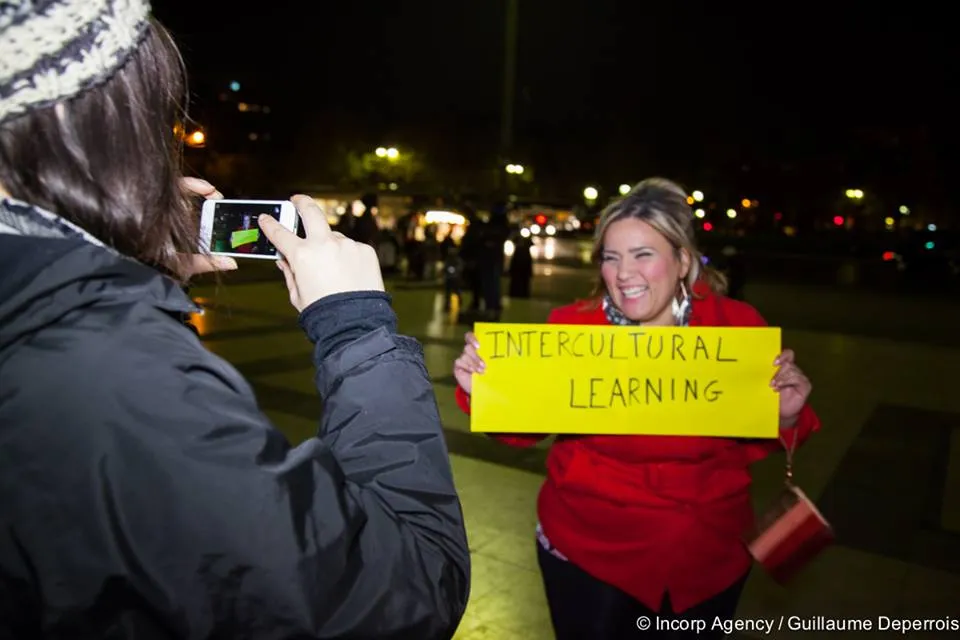More and more foreign language syllabi include an intercultural dimension in their design. Foreign language teachers rely on specialized content and tools so as to approach language in a way that goes beyond the communicative competence and allows their students to develop intercultural or global competences.
Is learning to speak a foreign language enough? Language is a message-sending communicative tool. According to some approaches (such as Byram’s, 1997), a communicative and interculturally competent person is one that knows how to build relationships while speaking a language as well as how to communicate so that all interlocutors’ needs are addressed. This is not an easy task, since there is another challenge that goes hand in hand with it: a language spoken by a certain community implies a certain worldview which is not always shared by those who learned that language as a foreign one. This is why the intercultural communicative competence involves far more than a word exchange: it is also about building up relationships and communicating successfully with others, even when the interlocutors do not share the same point of view.

The development of the intercultural competence is a complex but fruitful process, and this competence is essential for foreign language syllabi to be comprehensive. Here are some recommendations for foreign language teachers:
Practice with proverbs, slang and idiomatic expressions
These are excellent resources to start understanding a culture. They generally reference the history of a place, what is valued as positive or negative, and allow students to fluently communicate with natives using local expressions. It is a good idea to design exercises in which students have to deconstruct these meanings and do some research about the foreign community.
Get to know the foreign culture yourself
Visiting and living in the culture whose language you teach will help you get across its essence. What are the locals like? How do they communicate to each other? What is their sense of humor like? When do they use the formal register? Reflect on the things you notice during your journey, and travelling will become a transformational learning experience.
Avoid stereotypes
When teaching a foreign language, it is important not to use stereotypes, which account for traditional prejudices about that foreign culture. Using generalizations and showing cultural diversity will help students develop a more complex understanding about the culture, without falling into oversimplification.
Use cultural objects
Traditional objects may hide culture-specific values that are reflected in the language and in the way in which natives communicate. Design exercises in which students have to deconstruct these meanings and do some research about the foreign community. People from Argentina and Uruguay tend to travel the world with our traditional beverage, called “mate”, explaining how it represents values such as collectivism, camaraderie and friendship.
Do you have any other ideas to share?
It is clear that to develop intercultural competences in their students, foreign language teachers must be prepared and well-equipped. Combining foreign language learning with intercultural education can enhance and enrich the teaching process enormously.

This article was written by Julia Taleisnik (@julitaleisnik), Volunteer Development Director for AFS Argentina & Uruguay and an International Qualified Trainer for the AFS Intercultural Link Learning Program.